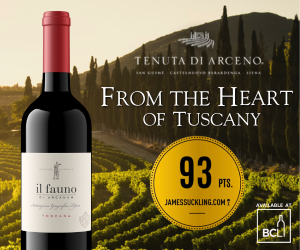Red blends are ubiquitous across British Columbia and Ontario, translating to the second largest category at the National Wine Awards with 10.4% of entries.
It’s one of the most challenging categories to judge. There’s a breadth of styles and grape varieties, and many of these wines won’t reach their peak for years. Judges work through tannin and acid to figure out which wines are exceptional now – or will be in five years’ time.
I would argue it’s one of the most rewarding to judge as a result. Especially this year, which felt like a tipping point. There was a step up in quality, which is reflected in the number of platinum medals awarded. Four red blends earned a platinum medal, representing 21% of all platinums awarded, up from just one last year. It also overperformed relative to other categories, capturing 11.2% of all medals.
VIDEO (2 min) Anthony Gismondi asks Ross Wise MW, Winemaker for Black Hills about his 2024 NWAC Platinum winner, the 2022 Bona Fide.
Even more exciting was the diversity on display flight after flight. Bordeaux blends and Rhone blends continue to be an important part of the story. Look no further than the Hester Creek 2022 GSM. But winemakers are increasingly evolving beyond the traditional French archetypes. Burrowing Owl has done this for years with Athene, a Syrah-Cabernet Sauvignon blend that follows in Australian footsteps.
Then, there’s the next frontier. Wines like Nostalgia 2020 Malbec Petit Verdot and Black Hills’ 2022 Bona Fide, a blend of 42% Malbec, 33% Carmenere, and 25% Syrah (see the video below for a short video with the winemaker), are part of a new wave of Okanagan red blends that do not easily fall into existing paradigms. The results show they are on a worthwhile path.

 quicksearch
quicksearch






